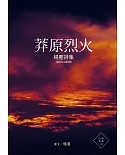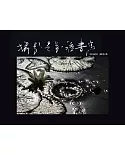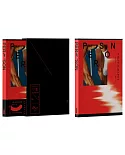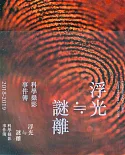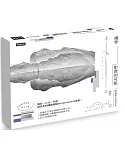陳志駒 首發個人攝影集 【OPEN】
攝影具有許多特性,最耳熟能詳的,「決定性的瞬間」(decisive moment)而言,要取得具有這樣特性的照片,無疑的,手機絕對是最佳的工具。它的敏捷性(agility),這種敏捷性可以改變攝影者的距離、角度、速度。這種進步,相對於攝影家,也會面臨更大的考驗,決定按快門容許時間變得更短,決定性的照片也會更多。
使用手機攝影的人類中,出現了所謂的「M型攝影家」。像陳志駒這樣的攝影家,就是位「M型攝影家」,他具有豐富的創造力,同時能駕馭手機的硬體與軟體的技術能力,過程中取得科技與人文的平衡。影像風格上,陳志駒開創了以往創作者既有的單一主題模式,在他的作品裡可看到不同時期的影像,畫面上是屬於多頭發展來呈現。
我們出版此書,想傳達在這個影像品質與速度達到歷史最高峰的時代裡,陳志駒如何透過手機的敏捷性來攝影及後製,創造出個人的影像風格,他無疑地是這階段重要的代表性人物。
作者介紹
攝影者簡介
陳志駒
台北 1962 ~
獲獎
2012 美國紐約 IAF (International Art Festival) 攝影類首獎
2014 美國 Ipa、莫斯科 Mifa 等國際攝影大賽多項榮譽獎銜
個展
2012「凝視」,恆畫廊,台北
「真實」,土地銀行,台北
「國際藝術節得獎人個展」,俄羅斯藝術美術館,紐澤西,美國
2013「風・雲」,觀想藝術中心,台北
「蓮荷國」,恆昶攝影藝廊,台北
2015「璀璨•凝聚」,晶華酒店 B1,台北
「Joy in Light」,BELLAVITA, 寶麗廣場 2F,台北
「想像之旅•愛的奧義」,BELLAVITA, B1 Gallery,台北
「光之饗宴」,BELLAVITA,萊卡旗艦店,台北
「鏡在,不言中」,回回金畫廊,華山藝文空間,台北
「影視,鏡化論」,蔡藝廊,彰化
2016「The power & grace」,Galleria Tina Modotti,米蘭,義大利
「給定 - 繪畫」個展,看到藝術空間,台北
聯展
2009「微塵•聖像」雙個展,雲清藝術中心,台北
2010「當代影像甄藏聯展」,雲清藝術中心,台北
2012「三個地方」影像創作聯展,臻品藝術中心,台中
Biography
Zeno Chen Taipei 1962 ~
Awards
2012 First Prize in the photography category by New York International Art Festival
2014 Winner of IPA (USA)、MIFA (Russia) and other competitions overseas
Sholo Exhibitions
2012 "STARE Solo Exhibition", Gallery H, Taipei "In TRUTH Solo Exhibition", Land Bank of Taiwan, Taipei "Solo Exhibitions of The International Art Festival Award Recipients", The Museum of Russian Art, New Jersey, USA
2013 "Climate of the Sentimental Solo Exhibition", Guan Xiang Art Gallery, Taipei "The Beauty of Lotus & Water lily Solo Exhibition", FujiFilm Gallery, Taipei
2015 "REGENT BRIGHT Solo Exhibition", Regent Taipei Hotel, B1 VIP Reading Room, Taipei
"Joy in Light Solo Exhibition", BELLAVITA, 2F aisle, Taipei
"Imagine Traveling & Love Art Solo Exhibition", BELLAVITA, B1 gallery, Taipei
"The Color of S Solo Exhibition", Leica Store, Taipei
2015 "More Than Just Photography Solo Exhibition", Vanessa Wang Gallery, Huashan creative park, Taipei
"More Than Just Photography Solo Exhibition", TSAI Gallery, Changhua
2016 "The power & grace Solo Exhibition", Galleria Tina Modotti, Milan, Italy
"The Donnée-Painting", See ART Space
Joint Exhibitions
2009 "Saint・Anonymous Joint Exhibition", Elsa Art Gallery, Taipei
2010 "Collection of Contemporary Photography and Images Exhibition", Elsa Art Gallery, Taipei
2012 "Three Location Joint Exhibition", Galerie Pierre, Taichung.
陳志駒
台北 1962 ~
獲獎
2012 美國紐約 IAF (International Art Festival) 攝影類首獎
2014 美國 Ipa、莫斯科 Mifa 等國際攝影大賽多項榮譽獎銜
個展
2012「凝視」,恆畫廊,台北
「真實」,土地銀行,台北
「國際藝術節得獎人個展」,俄羅斯藝術美術館,紐澤西,美國
2013「風・雲」,觀想藝術中心,台北
「蓮荷國」,恆昶攝影藝廊,台北
2015「璀璨•凝聚」,晶華酒店 B1,台北
「Joy in Light」,BELLAVITA, 寶麗廣場 2F,台北
「想像之旅•愛的奧義」,BELLAVITA, B1 Gallery,台北
「光之饗宴」,BELLAVITA,萊卡旗艦店,台北
「鏡在,不言中」,回回金畫廊,華山藝文空間,台北
「影視,鏡化論」,蔡藝廊,彰化
2016「The power & grace」,Galleria Tina Modotti,米蘭,義大利
「給定 - 繪畫」個展,看到藝術空間,台北
聯展
2009「微塵•聖像」雙個展,雲清藝術中心,台北
2010「當代影像甄藏聯展」,雲清藝術中心,台北
2012「三個地方」影像創作聯展,臻品藝術中心,台中
Biography
Zeno Chen Taipei 1962 ~
Awards
2012 First Prize in the photography category by New York International Art Festival
2014 Winner of IPA (USA)、MIFA (Russia) and other competitions overseas
Sholo Exhibitions
2012 "STARE Solo Exhibition", Gallery H, Taipei "In TRUTH Solo Exhibition", Land Bank of Taiwan, Taipei "Solo Exhibitions of The International Art Festival Award Recipients", The Museum of Russian Art, New Jersey, USA
2013 "Climate of the Sentimental Solo Exhibition", Guan Xiang Art Gallery, Taipei "The Beauty of Lotus & Water lily Solo Exhibition", FujiFilm Gallery, Taipei
2015 "REGENT BRIGHT Solo Exhibition", Regent Taipei Hotel, B1 VIP Reading Room, Taipei
"Joy in Light Solo Exhibition", BELLAVITA, 2F aisle, Taipei
"Imagine Traveling & Love Art Solo Exhibition", BELLAVITA, B1 gallery, Taipei
"The Color of S Solo Exhibition", Leica Store, Taipei
2015 "More Than Just Photography Solo Exhibition", Vanessa Wang Gallery, Huashan creative park, Taipei
"More Than Just Photography Solo Exhibition", TSAI Gallery, Changhua
2016 "The power & grace Solo Exhibition", Galleria Tina Modotti, Milan, Italy
"The Donnée-Painting", See ART Space
Joint Exhibitions
2009 "Saint・Anonymous Joint Exhibition", Elsa Art Gallery, Taipei
2010 "Collection of Contemporary Photography and Images Exhibition", Elsa Art Gallery, Taipei
2012 "Three Location Joint Exhibition", Galerie Pierre, Taichung.
目錄
我 Me
引言 Introduction
姿態 Attitude
靜物 Still Life
風景 Landscape
抽象 Abstract
出版者的話 Publisher's notes
索引 Index
引言 Introduction
姿態 Attitude
靜物 Still Life
風景 Landscape
抽象 Abstract
出版者的話 Publisher's notes
索引 Index
序
序
日常之外:陳志駒的手機攝影
藝評家 簡麗庭
特定技術的普及往往意味著專業領域的開放或民主化,使相關的技術和論述從少數的專業人士手中釋放出來,而能夠讓更多人參與其中。製造影像的歷史充分表明了這種開放的歷程,從繪畫到傳統攝影再到數位攝影,標示著影像生產成本降低與操作技術簡化的進程。然而,或許直到智慧型手機出現之後,製造影像才真正融入於日常生活中:自拍、各種生活情境的分享、以拍照做筆記等…。手機攝影之所以無孔不入地滲透到日常生活中並非單純的影像因素,而是它操作更為便利,並且有效地連結上數位化的社交生活。這構成了我們談論陳志駒手機攝影的前提。
事實上,陳志駒的創作是雙軌並進的。他有一系列相當耗時的作品,將影像視為繪畫的元素,透過圖層的大量重疊與調校,呈現出繪畫般的繁複性質 。相反的,在此所談的他的手機攝影則是另一種快速而偶然的製作,來自於生活中看似隨意的觀察與拍攝,僅簡略的在手機中調校色彩而不再進行其他後製。因此,相對於前者在工作室中以繪畫的方式操作,手機攝影則類似速寫(sketch),它的工作方式對時間、地點都沒有限制,具有高度的靈活性。
此系列作品的討論請參閱簡麗庭,「給定-繪畫:陳志駒個展」,See Art Space,www.seeart.space/new-page-2
然而,陳志駒的手機攝影雖然取之於日常生活,卻不能簡單地視之為日常生活的投射。他意不在於快速地記錄都市生活百態,如同波特萊爾(Charles Baudelaire)筆下的現代生活的畫家那樣;相反的,他的創作一直有一個清晰的軸線,也就是重視造形的表現(expression)而非對象的描述(description)。換言之,他對於影像的思考與現代繪畫的脈絡更接近,只不過現代繪畫在尋求畫布表面效果的進程中,可以透過強調造形結構的純粹性或繪畫媒材的物質性,進而削弱主題內容甚至朝向抽象;但是攝影則受制於光學與機械的運作,仍必須將鏡頭指向一個實際的對象。在這個意義上來說,攝影自身無法抽象,只能透過強調它的視覺效果去「趨近」抽象。因此,陳志駒的手機攝影所關注的,不在於生活即景或拍攝的對象為何,而在於如何藉由這個對象去處理視覺的,以及透過視覺所牽動的心理學的效果。在此,他的若干操作手法尤其值得關注:
其一,他對於場景(scene)的處理通常不是描述性的,而是為了捕捉特殊的整體造形,因此經常採用詭異的視角,甚至任由它失焦。有時則刻意將極近和極遠的景物同時收入景框,而呈現出清晰與模糊的強烈對比。
其次,他經常拍攝對象的局部,透過極近的拍攝距離使讀者失去空間座標。甚至有些作品中的景物已難以辨識,只留存下特殊的質感,畫面因而趨向平面與抽象。
其三,他經常透過一個中介物來拍攝,比如透過鏡面的反射、水波及其倒影、玻璃的反光與背後的景物等…。相對於另一系列將許多圖層重疊在一起的創作方式,直接拍攝中介物有時也具有類似的疊影效果。
上述這些手法互有關聯,並且經常混用。此外,或許是出於強調影像表現效果之故,陳志駒手機攝影的作品中大多調整為黑白,並且裁切為正方形的畫面,而有別於手機攝影的預設形式。這些細節的考量或可視為他的創作表態。在影像泛濫、人手一機的今天,攝影的操作已不是難事,藝術才是真正的難題。在陳志駒的案例中,創作概念、作品形式、工作程序與工具性能是一併思考的,也唯有如此,藝術家才能擺脫慣性,形塑出自己的語彙。
Beyond the everyday life: Zeno Chen’s smartphone photography
Art Critic JIAN Li-Ting
Easy accessibility to specific technology always leads to the openness or liberalization of professional domain. Professional knowledge is released from the few owing the better cultural and economic capital to the public, and more people can participate. From painting, traditional photography, to modern digital photography, the history of image production fully illustrates the process of such technology liberalization, including cost reduction and operation simplicity. However, maybe, only after the invention of smartphone, image production is deeply integrated into daily life, such like selfie, share of life circumstances, photograph notebook, and so on. The key for smartphone photography to be so much penetrating into our daily life is not its function of making images; instead, its easy use and efficient connection to the digital social platform are the reasons for its popularity. And, these also initiate our discussion about Zeno Chen’s smartphone photography.
In fact, Zeno Chen’s artworks are made in two different ways. He has a series of quite time consuming works in which photographs are turned into the elements of an image. By a lot of overlapping photographs with adjusted positions, a property of complexity like a painting is demonstrated. On the other hand, his smartphone photographs are randomly and swiftly created by catching occasional life observations with only simple color adjustment equipped in the phone. If the photograph which is made in his workroom is a painting, the smartphone photograph is more like a sketch which has high flexibility without time or place limitation.
However, although Zeno Chen’s smartphone photography has caught ideas from daily life, the works can not be considered as the reflection of daily life. His intention is not to swiftly record what happens in daily life, like those modern artists in Charles Baudelaire’s book. His works have a very clear axis, emphasizing expression instead of description. In another words, his deliberation for creating images is quite close to that of modern painting. Nevertheless, modern painting can weaken the subject, even making it abstract, by emphasizing the purity of the model structure or the painting material in the process of seeking the surface effects on the canvas. For photography, under the constraints of optics and mechanism operation, a camera still has to be aimed to a real subject. Therefore, photography actually can not be absolutely abstract. The photographer can only make his work “close” to abstract by focusing on visual effects. What Zeno Chen wants to tell in his smartphone photographs is not a record of the life or the subject in the photo, but the visual and the psychological effects created by the photo. Several skills are worthy of paying attention:
1. It’s usually not descriptive when he deals with the scene. In order to catch a whole special model, he often uses strange visual angles without caring about losing focus. Sometimes, he intentionally includes the very far and very near views into his frame to create strong contrast of clearness and fuzziness.
2. He often takes only a portion of a subject with very short distance, so the viewer will lose space coordinate. Sometimes, the scene can not be recognized and the picture tends to be flat and abstract.
3. His photos are often taken through a medium, for example, reflection of mirror, reflection of water with wave, subject through glass with light reflection...etc. Sometimes, by through a medium, he creates a similar multiple image effect like overlapping the photos.
All the above skills relate to each other and are often combined used. In addition, maybe intending to focus the image effect, Zeno Chen’s mobile phone photos are mostly adjusted to black and white, and cut into square, different from the default setting of mobile phones. Care of these details can be considered as his personal style. With flooding images and easy access of mobile phones, to take a photo is definitely not difficult, even the photo quality has can be very difference. In Zeno Chen’s case, artwork ideas, form of works, production procedure, and tool functions are all considered. Only in this way, an artist can break the inertia, and invent his own art language.
日常之外:陳志駒的手機攝影
藝評家 簡麗庭
特定技術的普及往往意味著專業領域的開放或民主化,使相關的技術和論述從少數的專業人士手中釋放出來,而能夠讓更多人參與其中。製造影像的歷史充分表明了這種開放的歷程,從繪畫到傳統攝影再到數位攝影,標示著影像生產成本降低與操作技術簡化的進程。然而,或許直到智慧型手機出現之後,製造影像才真正融入於日常生活中:自拍、各種生活情境的分享、以拍照做筆記等…。手機攝影之所以無孔不入地滲透到日常生活中並非單純的影像因素,而是它操作更為便利,並且有效地連結上數位化的社交生活。這構成了我們談論陳志駒手機攝影的前提。
事實上,陳志駒的創作是雙軌並進的。他有一系列相當耗時的作品,將影像視為繪畫的元素,透過圖層的大量重疊與調校,呈現出繪畫般的繁複性質 。相反的,在此所談的他的手機攝影則是另一種快速而偶然的製作,來自於生活中看似隨意的觀察與拍攝,僅簡略的在手機中調校色彩而不再進行其他後製。因此,相對於前者在工作室中以繪畫的方式操作,手機攝影則類似速寫(sketch),它的工作方式對時間、地點都沒有限制,具有高度的靈活性。
此系列作品的討論請參閱簡麗庭,「給定-繪畫:陳志駒個展」,See Art Space,www.seeart.space/new-page-2
然而,陳志駒的手機攝影雖然取之於日常生活,卻不能簡單地視之為日常生活的投射。他意不在於快速地記錄都市生活百態,如同波特萊爾(Charles Baudelaire)筆下的現代生活的畫家那樣;相反的,他的創作一直有一個清晰的軸線,也就是重視造形的表現(expression)而非對象的描述(description)。換言之,他對於影像的思考與現代繪畫的脈絡更接近,只不過現代繪畫在尋求畫布表面效果的進程中,可以透過強調造形結構的純粹性或繪畫媒材的物質性,進而削弱主題內容甚至朝向抽象;但是攝影則受制於光學與機械的運作,仍必須將鏡頭指向一個實際的對象。在這個意義上來說,攝影自身無法抽象,只能透過強調它的視覺效果去「趨近」抽象。因此,陳志駒的手機攝影所關注的,不在於生活即景或拍攝的對象為何,而在於如何藉由這個對象去處理視覺的,以及透過視覺所牽動的心理學的效果。在此,他的若干操作手法尤其值得關注:
其一,他對於場景(scene)的處理通常不是描述性的,而是為了捕捉特殊的整體造形,因此經常採用詭異的視角,甚至任由它失焦。有時則刻意將極近和極遠的景物同時收入景框,而呈現出清晰與模糊的強烈對比。
其次,他經常拍攝對象的局部,透過極近的拍攝距離使讀者失去空間座標。甚至有些作品中的景物已難以辨識,只留存下特殊的質感,畫面因而趨向平面與抽象。
其三,他經常透過一個中介物來拍攝,比如透過鏡面的反射、水波及其倒影、玻璃的反光與背後的景物等…。相對於另一系列將許多圖層重疊在一起的創作方式,直接拍攝中介物有時也具有類似的疊影效果。
上述這些手法互有關聯,並且經常混用。此外,或許是出於強調影像表現效果之故,陳志駒手機攝影的作品中大多調整為黑白,並且裁切為正方形的畫面,而有別於手機攝影的預設形式。這些細節的考量或可視為他的創作表態。在影像泛濫、人手一機的今天,攝影的操作已不是難事,藝術才是真正的難題。在陳志駒的案例中,創作概念、作品形式、工作程序與工具性能是一併思考的,也唯有如此,藝術家才能擺脫慣性,形塑出自己的語彙。
Beyond the everyday life: Zeno Chen’s smartphone photography
Art Critic JIAN Li-Ting
Easy accessibility to specific technology always leads to the openness or liberalization of professional domain. Professional knowledge is released from the few owing the better cultural and economic capital to the public, and more people can participate. From painting, traditional photography, to modern digital photography, the history of image production fully illustrates the process of such technology liberalization, including cost reduction and operation simplicity. However, maybe, only after the invention of smartphone, image production is deeply integrated into daily life, such like selfie, share of life circumstances, photograph notebook, and so on. The key for smartphone photography to be so much penetrating into our daily life is not its function of making images; instead, its easy use and efficient connection to the digital social platform are the reasons for its popularity. And, these also initiate our discussion about Zeno Chen’s smartphone photography.
In fact, Zeno Chen’s artworks are made in two different ways. He has a series of quite time consuming works in which photographs are turned into the elements of an image. By a lot of overlapping photographs with adjusted positions, a property of complexity like a painting is demonstrated. On the other hand, his smartphone photographs are randomly and swiftly created by catching occasional life observations with only simple color adjustment equipped in the phone. If the photograph which is made in his workroom is a painting, the smartphone photograph is more like a sketch which has high flexibility without time or place limitation.
However, although Zeno Chen’s smartphone photography has caught ideas from daily life, the works can not be considered as the reflection of daily life. His intention is not to swiftly record what happens in daily life, like those modern artists in Charles Baudelaire’s book. His works have a very clear axis, emphasizing expression instead of description. In another words, his deliberation for creating images is quite close to that of modern painting. Nevertheless, modern painting can weaken the subject, even making it abstract, by emphasizing the purity of the model structure or the painting material in the process of seeking the surface effects on the canvas. For photography, under the constraints of optics and mechanism operation, a camera still has to be aimed to a real subject. Therefore, photography actually can not be absolutely abstract. The photographer can only make his work “close” to abstract by focusing on visual effects. What Zeno Chen wants to tell in his smartphone photographs is not a record of the life or the subject in the photo, but the visual and the psychological effects created by the photo. Several skills are worthy of paying attention:
1. It’s usually not descriptive when he deals with the scene. In order to catch a whole special model, he often uses strange visual angles without caring about losing focus. Sometimes, he intentionally includes the very far and very near views into his frame to create strong contrast of clearness and fuzziness.
2. He often takes only a portion of a subject with very short distance, so the viewer will lose space coordinate. Sometimes, the scene can not be recognized and the picture tends to be flat and abstract.
3. His photos are often taken through a medium, for example, reflection of mirror, reflection of water with wave, subject through glass with light reflection...etc. Sometimes, by through a medium, he creates a similar multiple image effect like overlapping the photos.
All the above skills relate to each other and are often combined used. In addition, maybe intending to focus the image effect, Zeno Chen’s mobile phone photos are mostly adjusted to black and white, and cut into square, different from the default setting of mobile phones. Care of these details can be considered as his personal style. With flooding images and easy access of mobile phones, to take a photo is definitely not difficult, even the photo quality has can be very difference. In Zeno Chen’s case, artwork ideas, form of works, production procedure, and tool functions are all considered. Only in this way, an artist can break the inertia, and invent his own art language.
網路書店
類別
折扣
價格
-
新書88折$1320
-
新書9折$1350
-
新書95折$1425

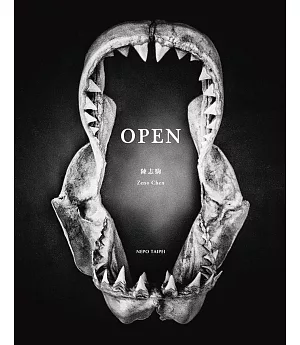





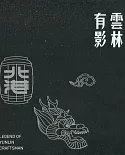
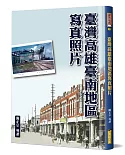
![許淵富(全三冊)[盒裝]](https://www.books.com.tw/image/getImage?i=https%3A%2F%2Fwww.books.com.tw%2Fimg%2F001%2F089%2F19%2F0010891974.jpg&width=125&height=155)
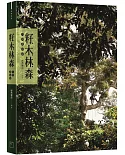
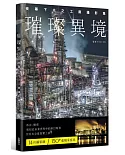
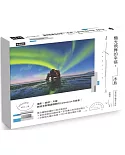
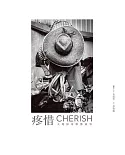
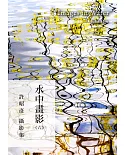
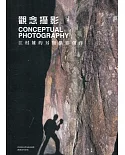
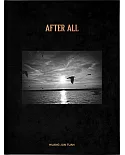
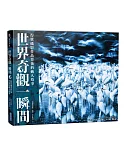
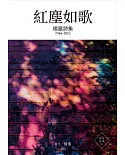
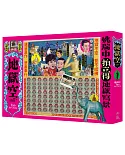
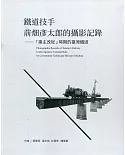
![敘事中的風景[線裝]](https://www.books.com.tw/image/getImage?i=https%3A%2F%2Fwww.books.com.tw%2Fimg%2F001%2F091%2F72%2F0010917209.jpg&width=125&height=155)
